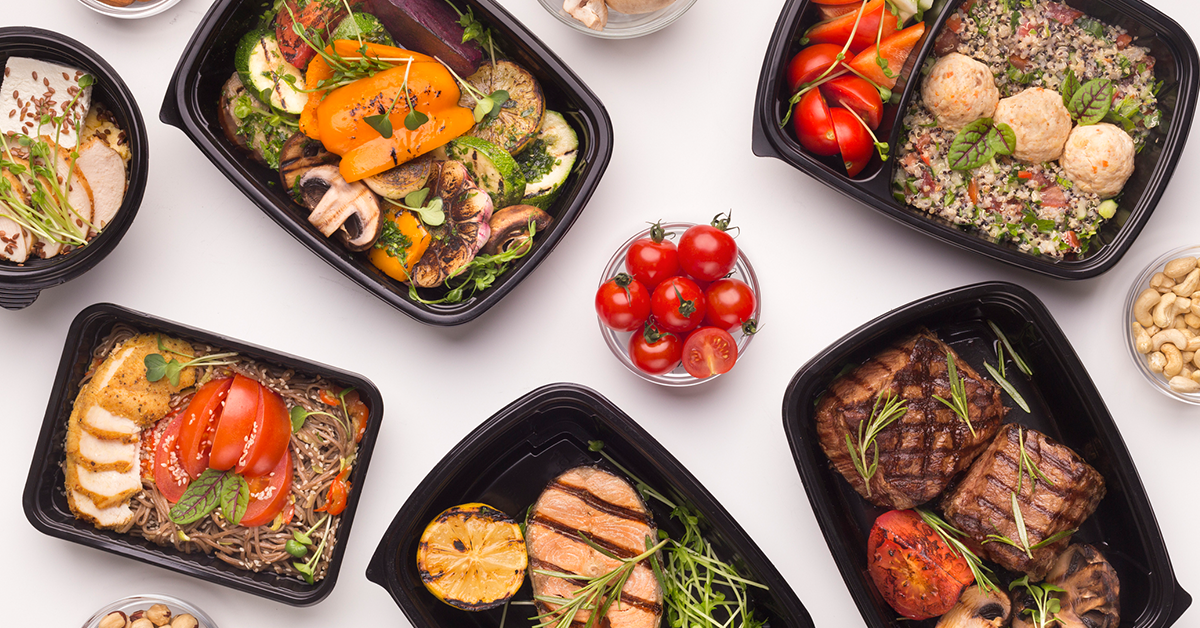Food Chain Shifts: COVID’s Impact in Consumer Behavior, Other Trends
by Staff, on Feb 7, 2022 11:11:57 PM

The COVID-19 pandemic has exposed many weaknesses in the U.S. economy, including widespread furloughs, layoffs, business closers, and high rates of unemployment. The pandemic also has had a significant impact on food chains worldwide. It caused major disruption in supply chains with the shift to home-dining and a surge in demand for takeout. What does this mean to food chain strategy?
For years, the food supply chain has been design, executed and managed by food companies to be efficient, lean and at minimum expense. Then the pandemic hit—forcing restaurants to close and grocery store business to explode because most everyone was cooking and eating at home.
The shift to home-dining forced many food companies to adjust their traditional business models – and related manufacturing, packaging, logistics and distribution operations.
To what extent has the pandemic hit the food industry? In 2020, it obviously decimated many restaurants. In fact, during 2020 alone 87% of full-service restaurants report an average of 36% drop in sales revenue, according to the National Restaurant Association. The NRA also says approximately 110,000 have either temporarily or permanently closed.
Fortunately, some sectors in the food and beverage industry have gained traction and significantly increased business. According to a recent McKinsey report, grocers have gained significant “share of stomach” through North America as people have shifted to living, working and learning at home. Historically the grocery sector in North America has seen 1 to 2 percent growth each year, but it grew approximately 12 percent in 2020 alone – offsetting significant reductions in food consumption away from home.
And of course, on-line activity and e-commerce is driving dramatic opportunities (and challenges) for supply chain strategies everywhere.
Assessment Is Key
To thrive in this new environment, pros who manage the supply chain activities for food companies need to address several critical questions:
- When (and how) will demand for my products, materials, and/or services shift next?
- How can I best determine and meet total demand across multiple channels?
- What can I do to adjust my supply chain strategy to proactively address challenges and opportunities?
While answering these questions and responding according with your food chain strategy, the food chain also needs to be nimble and flexible – being able to change as consumer habits quickly change. This is driven in particular by direct causes, such as the shortage of labor to move goods (especially truck drivers and dock workers), inconsistent ingredient supplies, and record inflation for materials, according to Food Engineering. To address whatever challenges may come next, executives who plan and manage food chains need to develop collaborative relationships with their partners across the chain and jointly craft contingency plans.
Other Trends that Can Impact Your Food Chain
- Can you identify any significant changes in purchasing behavior that could create long-term or even permanent shifts in your business? If so, this may ultimately force you to look at your warehouse and DC network differently. Proximity to ports, airports, and trucking facilities are underlying factors for determining the optimum locations of facilities within your network – whether it’s your own facilities or those within your supply chain partners.
- If your supply chain relies on a significant amount of last-mile or final-mile delivery, be aware that parcel shipping will be even more of a cost in 2022. Both FedEx and UPS recently raised their rates by nearly 6%. And that doesn’t even factor in the sting food shippers can face from surcharges.
- Be proactive on how you’re reacting to inflation – because nearly all economists are saying that a continued reality in the coming months. High demand and shortages can make inflation appear quickly. While the root causes of inflation are beyond the control of food companies, there are ways to effectively manage these price increases. For example, on the grocery side of business executives at Albertsons and other grocers have said in recent weeks that they’re holding back increases on essential goods and key items while letting them flow through on more discretionary purchases. Recently, Winn-Dixie announced it is dropping prices by an average of 15% on more than 150 of its most-shopped items.
More Attention Brings More Awareness
One positive about the pandemic’s impact on food chains is that it has brought an acute awareness to the general public – which also has translated to elevated attention in the C-suite and board rooms. Historically, many food supply chains have operated with little fanfare. But more recently, food chains have captured more attention among key stakeholders, as well as among policymakers. In fact, in June 2021 the U.S. Department of Agriculture announced a commitment of more than $4 billion to rebuild the U.S. food system and to strengthen and diversify supply chains for food production, processing, distribution, aggregation, markets, and consumers.
The focus on the food chains offers those involved an opportunity to tell their story—largely a positive one—and to engage all stakeholders in exploring ways to build more nimble, stronger supply chains.
Like this kind of content? Subscribe to our "Food For Thought" eNewsletter!
Now more than ever, professionals consume info on the go. Distributed twice monthly, our "Food For Thought" e-newsletter allows readers to stay informed about timely and relevant industry topics and FSA news whether they're in the office or on the road. Topics range from capacity, rates and supply chain disruption to multimodal transportation strategy, leveraging technology, and talent management and retention. Learn More



